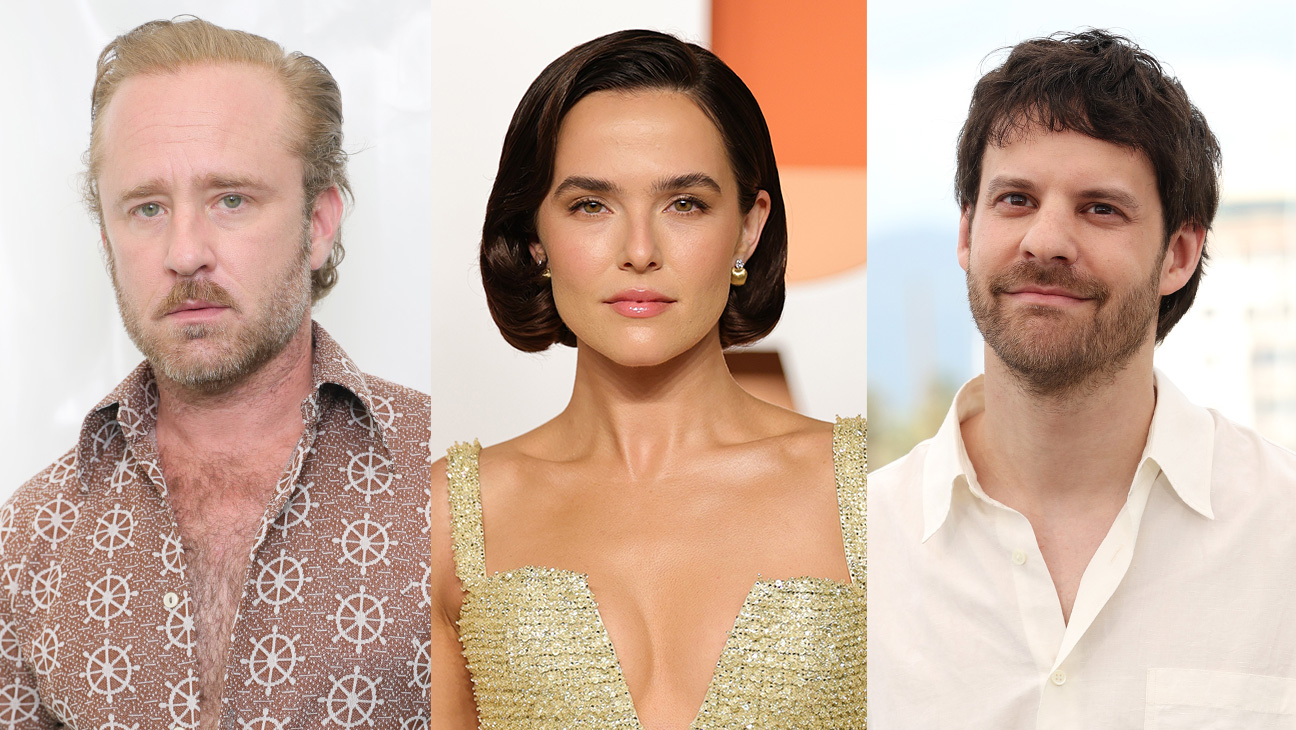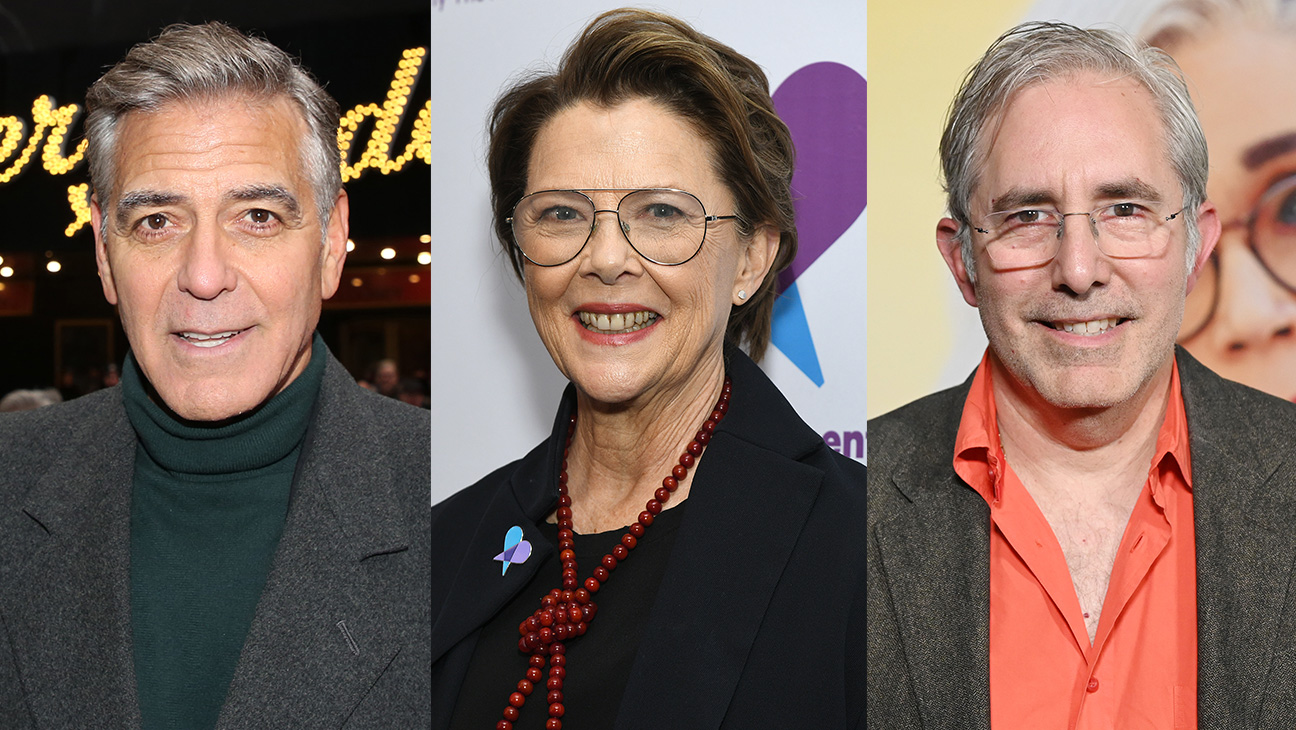Getting into character as Lorenz Hart required more than just a physical transformation for Ethan Hawke.
He appears in Richard Linklater’s Blue Moon, as the balding and diminutive lyricist of such hits as “Blue Moon” and “My Funny Valentine,” looking almost unrecognizable. His character sweeps into Sardi’s on opening night of Oklahoma!, vacillating between anecdotes about his career highs and bemoaning the theater world that’s now left him behind, including his former partner, Richard Rodgers (played by Andrew Scott).
All of this is delivered in a near constant stream of dialogue from Hawke, as he tries to make up for his shortcomings with charm, and delivers what Linklater calls a “little howl into the night.” Reaching that point required Hawke to shed some of himself.
“We were kind of dismantling Ethan Hawke,” Linklater said.
“If you think of who is Larry Hart? He’s really just a brain, a wit, a mouth, but in body form, that’s not his thing,” Linklater added. “For that to work, Ethan’s gestures and who he is kind of had to go away as much as possible.”
“He knows every trick in my bag, and he didn’t want to see any of them. And that was challenging,” Hawke said of Linklater. With that, Hawke calls the role the “hardest thing” he’s ever done.
The other challenge for Hawke was the fact that the film was all largely shot in one location, a Sardi’s replica built in Dublin. This meant the camera was almost always on him, documenting his character sneaking drinks as he takes in the celebratory party for Rodgers.
Work on the film began more than a decade ago, when Linklater received “pages and pages” of Lorenz Hart monologues from Robert Kaplow, who he had collaborated with on Me and Orson Welles. Linklater, a lover of the theater world, sent it to Hawke, with whom he had worked on eight previous projects, including Boyhood and the Before trilogy.
“My first love affair in this life was with the theater, and all my mentors were men that are kind of reminiscent of Larry Hart to me. These people who see the theater as almost a monastic calling something of a higher order, and they’re brilliantly educated and funny. My brain couldn’t stop wondering, what would it be like to be seated at a bar next to Larry Hart at the Oklahoma! premiere? It seemed like the stuff of myth or legend,” Hawke said.
Over the past decade, Linklater would host a series of readings with Hawke, with Kaplow making adjustments to the script after each one, in a workshop process typical of the director’s films. “Meanwhile, Ethan was aging into the part. He was a little young when we first started,” Linklater said. Through the workshops, Hawke was also finding his way into the complex role.
Bobby Cannavale was called in to play the Sardi’s bartender, as he recalls Linklater saying, “I need you to basically play New York City in the form of this character.” And he and Hawke spent time at the real Sardi’s in Manhattan before heading to Dublin to rehearse with the cast, which also includes Margaret Qualley playing a young woman who Hart, a gay man, is paradoxically in love with.
Once filming started, the Sardi’s set almost felt like the actual Broadway haunt, except for when the local background actors would speak between takes.
“It was very funny having everybody looking like the great and the good of the theatrical community of the time and of Broadway and then hearing the Dublin accents,” said Scott, who is also from Dublin, as is Simon Delaney, who plays Oscar Hammerstein.
While Rodgers, who skyrocketed to fame with Oklahoma!, has been reported to be a cold and businesslike figure, Scott said he tried to put aside any pre-conceived notions of the composer, and follow the dynamic between Rodgers and Hart that was set out in the script.
“It seems to me that they had a real bond, a creative bond, but that the sort of pragmatism of how they worked just ceased being productive. And I think Lorenz Hart was dealing with a real illness. He was really sick with alcoholism, and that’s a kind of elephant in the room, in some ways. It just so happens that this room is a very heady, famous restaurant on a very heady opening night in theater history,” Scott said.
Much of Scott’s rehearsal process was spent finding the right “geography and choreography” to make the eventual conversation between Rodgers and Hart seem both spontaneous and believable, amid a bustling party and constant interruptions from well-wishers.
“Particularly with Ethan’s performance, I think there’s a huge amount of empathy that you feel for him,” Scott added. “We all understand it’s difficult in our industry, because you’re self-employed, and it’s hard when you’re not at your creative best, or you’re not at your emotional or spiritual best to exist sometimes in this industry, because you have to give so much of yourself.”
As for whether Hart, who is shown in the opening scene of the film collapsed in an alley, should be pitied, Hawke says that’s too simple of an emotion for the brilliant, but complicated character.
“To see somebody struggle against the inevitability of the night falling on his life, and to watch the mind rage against it while it defeats itself, that’s an incredibly complex character in that way,” Hawke said. “And what I would hope the audience would be interested in is that complexity: how he can love Richard Rogers with a passion, and hate him; how he can long to be successful, and not be able to stop drinking; how he can be gay, and in love with a woman. There’s all these fascinating contradictions that are completely human. We all understand them. And so it’s kind of like watching an elaborate car accident.”





